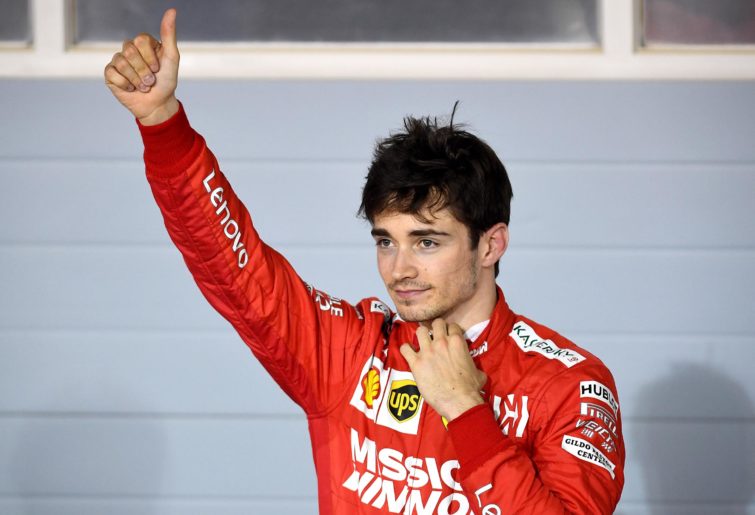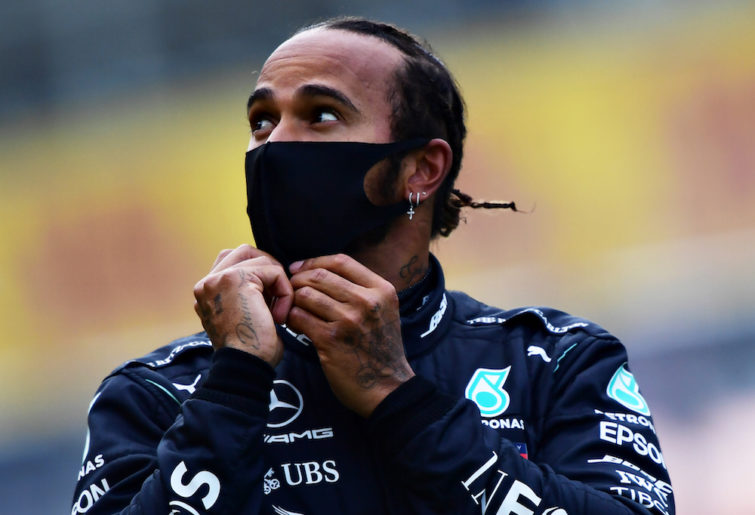Japanese Grand Prix talking points: Verstappen returns to winning ways as Perez solidifies grip on Red Bull seat
Red Bull and Max Verstappen vaulted right back to the top of the charts with a win in Suzuka, after his DNF in Melbourne.
Opinion
Two weekends ago, in the aftermath of a devastating defeat for England in the Euro final at Wembley, three English players – all of whom missed penalties in the shootout which gifted Italy the tournament – were subjected to widespread, online racial abuse.
Such has become a very disturbing feature of sport in recent times, representing a very ugly aspect of humanity which we all must fight to overcome.
Indeed, as one recent catchphrase associated with the Black Lives Matter movement declared: “It takes all of us”.
Against that backdrop, English sporting hopes moved to Silverstone last weekend, where local hero Lewis Hamilton was looking to claim his eighth British Grand Prix victory.
Several big names were out to witness the event, including Tom Cruise and Harrison Ford (aka Han Solo).
Though Hamilton faced a difficult challenge. He had not won a race since the Spanish GP on May 9th – five races ago, representing the longest stretch of his career since winning the world championship with Mercedes in 2014, and his main rival and 2021 championship leader, Red Bull’s Max Verstappen, had won three straight.
Verstappen had also out-qualified Hamilton to claim pole position, despite a mid-season change to the qualifying format which arguably benefitted Mercedes.
A second consecutive weekend of misery for British sport beckoned.
And so the race commenced, with Verstappen vigorously defending his position against a seemingly desperate Hamilton – right up until turn 9, known as Copse.

Max Verstappen (Mark Thompson/Getty Images)
The precise events which transpired at Copse have been debated intensely in the days following but in essence, Hamilton’s Mercedes hit the right rear wheel of Verstappen’s Red Bull, sending it off the circuit and into the barrier at 290 km/h.
Almost immediately, Hamilton radioed his team, saying: “I’ve got damage”. Yellow flags were shown, banning overtaking and signalling to all drivers to exercise greater caution.
This is usually a time when drivers return to the pits for tactical reasons yet despite several drivers doing so, Hamilton continued past the pit lane entry, curiously content to continue the race with a damaged car.
Not long after, that decision was vindicated when the race was ‘red flagged’: suspending it, resulting in a restart from the pit lane. Crucially for Hamilton (but not for the other 19 drivers, since no other car was damaged), this allowed his car to be repaired prior to the race recommencing, without losing any time.
What happened next may be only be described as bizarre.
With all cars back in the pit lane and Verstappen sitting in an ambulance on the edge of the circuit, Mercedes team principal Toto Wolff was involved in an extraordinary radio exchange with F1 race director Michael Masi.
During the exchange, Wolff told Masi that he had just sent him an email containing diagrams showing the ideal positions for cars at turn 9, to which Masi replied that he did not check his emails during races for safety reasons.
Wolff then reportedly sprinted up to the stewards’ room, presumably to defend the actions of his driver.
Just how Wolff managed to compile his ‘diagrams’ in the very few minutes following the collision, especially while Verstappen’s welfare had still not been confirmed, has not been explained and may justifiably arouse suspicion.
It would be another 30 minutes or so before the stewards completed their investigation of the incident, during which time viewers were subjected to a series of opinions from BBC commentators and former drivers (all British) – all of which, with the notable exception of former world champion Damon Hill, went to some lengths to mitigate Hamilton’s actions and even to categorise the accident as an ‘unfortunate racing incident’.
Yet in circumstances where Hamilton’s Mercedes was always behind Verstappen’s car and physically made contact with the back of the Red Bull causing the accident, the prevailing consensus of ‘racing incident’ was rather astounding.
So, by the time the stewards announced their decision, attributing complete blame to Hamilton (Verstappen was not sanctioned) yet issuing only a ten-second penalty (the second lightest penalty available), the seriousness of Hamilton’s actions had already been somewhat downplayed.
And the outrage which may ordinarily have been present amongst neutral observers was somehow diluted such that at least to some, Hamilton’s penalty may have even seemed more or less appropriate.
When the race resumed, Hamilton did not attempt to overtake the Ferrari of Charles Leclerc (which had passed him following the accident) in the same aggressive manner in which he had attacked Verstappen, appreciating (as all ardent F1 fans surely did) that he would have the Ferrari’s measure throughout the course of the 52-lap race.
Hamilton would ultimately pass Leclerc with three laps to go to claim his eighth British GP victory, averting a second British sporting crisis in consecutive weekends.
But there was no justice in the outcome: Hamilton had knocked his main rival out of the race, the damage to his car was repaired, and the race effectively started again with only Leclerc – with just two F1 victories under his belt, the most recent at Monza in September 2019 – on pole.

Charles Leclerc (Clive Mason/Getty Images)
Red Bull team boss Christian Horner later described Hamilton’s conduct as “dirty driving”, while Hamilton himself took to Twitter blaming Verstappen, saying he would “never back down from anyone [and would] not be bullied into being less aggressive”.
Given the stewards’ finding of fault against him, and the position of his Mercedes on the track at all times behind Verstappen’s Red Bull, Hamilton’s use of the words “never back down” and “bullied” was unfortunate, perhaps even inciteful.
Indeed, in circumstances where he had won his first race in more than two months only after having sent his main rival and championship favourite off the track and straight to hospital, Hamilton was hardly the victim.
Yet his willingness to assume the role is both troubling and surprising.
It has become a difficult season for Hamilton. After a promising start which saw him win three of the first four races, the era of Mercedes dominance – which has yielded an impressive seven consecutive world championships since 2014, with the team winning three of every four races during that span – is now showing signs of fading.
Red Bull has claimed five of the past six poles and in the one race where Hamilton’s Mercedes occupied that coveted grid spot – in Azerbaijan – Red Bull’s Sergio Perez ultimately took first place.
Hamilton is a seven-time world champion who has for so long occupied a seat in the best car, enjoying a lack of competition from all of the other teams.
He has become very accustomed to gracing the podium, failing to finish in the top three on just 26 occasions in the past 138 races. And the reliability of his Mercedes has been second to none, failing him only seven times over that entire period.
Just how he will cope then with the apparent change to the power structure is not entirely certain, although his desperate move at Copse at the weekend – one of the fasters corners in the world where successful overtaking almost never occurs – may provide an insight.

(Photo by Mario Renzi – Formula 1/Formula 1 via Getty Images)
What is more certain is that his victory was undoubtedly soured by an accident which he could quite easily have avoided but instead caused.
It was further soured by the stewards’ penalty which, for all intents and purposes, was inconsequential and, as Verstappen later commented, was never going to “do justice [for] the dangerous move [Hamilton] made on the track”.
Even objective British fans (there are some) would have had difficulty reconciling Hamilton’s victory with the unjust circumstances which made it possible – circumstances which were rendered much more unjust by the concerted efforts of British commentators to downplay the accident and to subsequently support the ‘slap-on-the-wrist’ decision of the stewards and even, as Hamilton ultimately did, blame Verstappen for the accident.
All of those factors, together with a strong sense of injustice, seemingly enraged fans of the sport, who took to social media in their thousands to voice their discontent.
Some went too far, engaging in racial abuse directed towards Hamilton – actions which are worthy of the highest condemnation, for racism has no place in sport (or life generally) and thankfully encouraging efforts are now underway to prosecute those responsible.
But the fight requires more than just the efforts of the fans. It surely includes stewards, commentators, team principals and other drivers as well.
It really does take all of us.